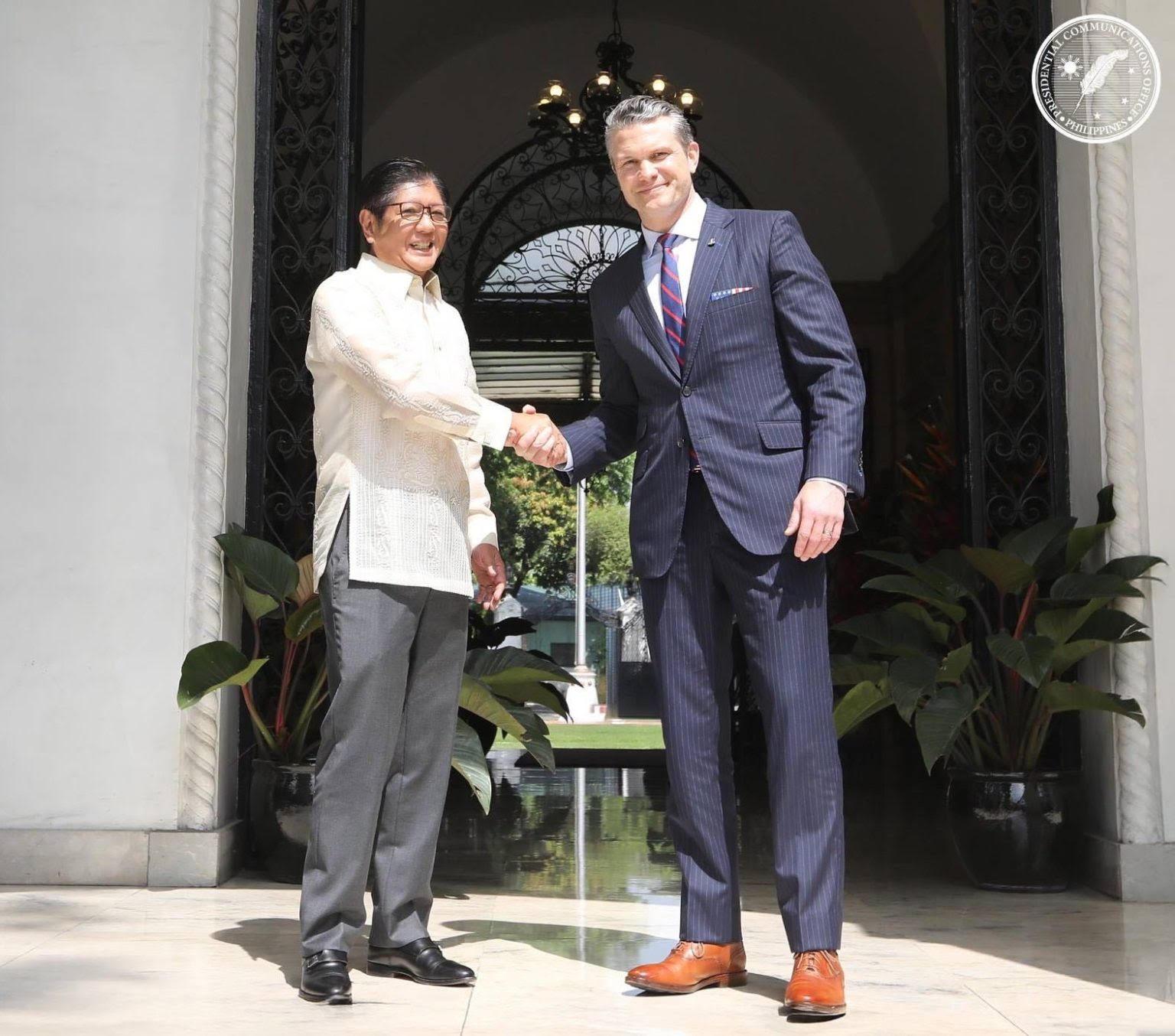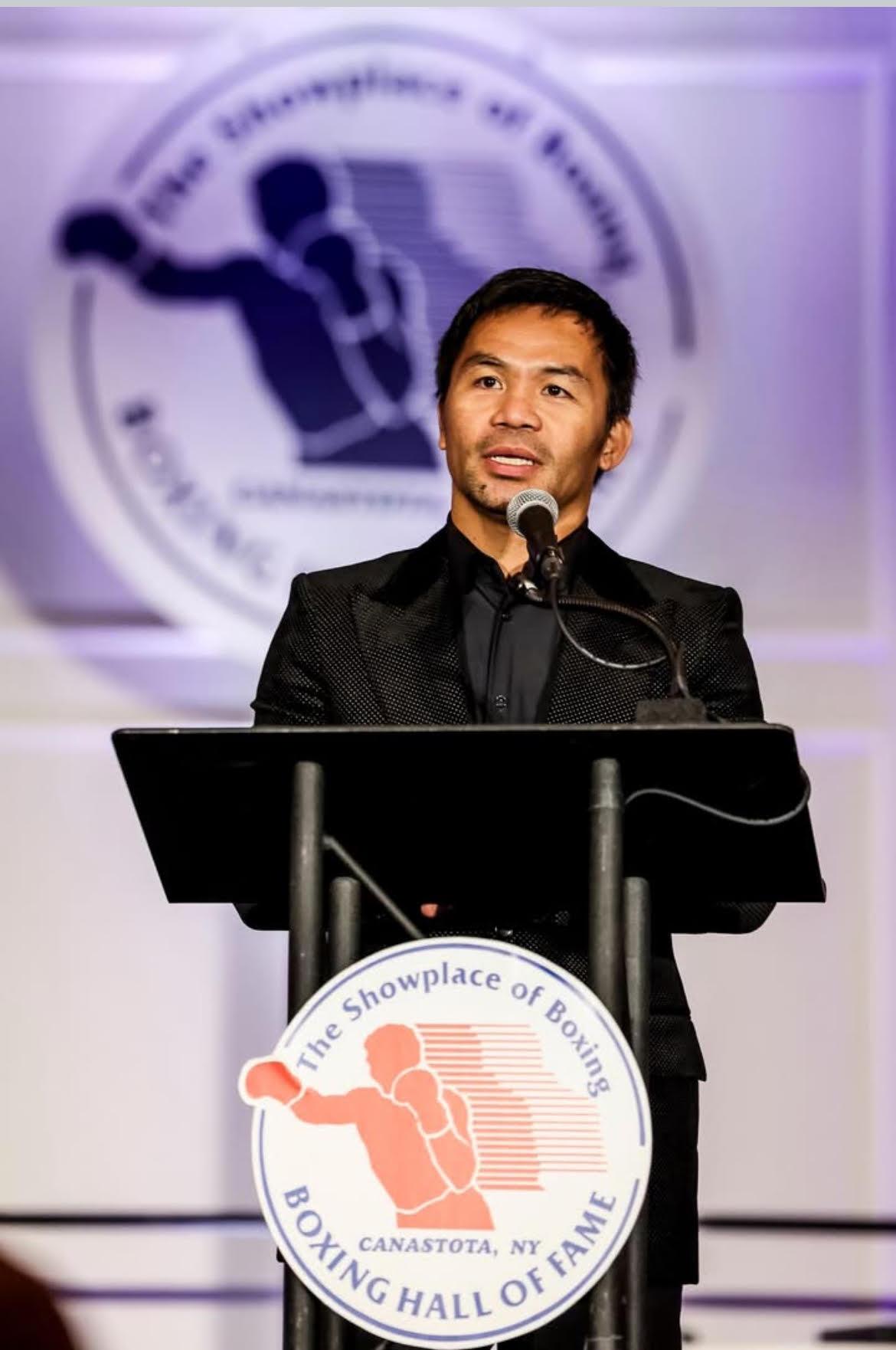President Ferdinand R. Marcos Jr. welcomes U.S. Secretary of Defense Pete Hegseth at Malacañang Palace during the latter’s official visit to the Philippines. His visit reaffirms the United States’ commitment to its treaty alliance with the Philippines amid evolving regional security dynamics. Photo Credit: Office of the President of the Philippines – Presidential Communications Office
In a high-level meeting that marked a significant reaffirmation of bilateral ties, President Ferdinand R. Marcos Jr. welcomed United States Secretary of Defense Pete Hegseth to Malacanang Palace on Friday, spotlighting a renewed chapter in the enduring U.S.-Philippine alliance amid rising regional tensions and global strategic shifts.
Secretary Hegseth, making his first official visit to Southeast Asia since taking office, selected the Philippines as the initial stop in his Indo-Pacific tour—a symbolic gesture that resonated deeply with both countries’ long-standing defense and economic partnership.
“Your visit to the region, and especially the fact that you have come to the Philippines as your first stop, is a very strong indication and sends a very strong message of the commitment of both our countries to continue to work together to maintain peace in the Indo-Pacific region, within the South China Sea,” President Marcos said during the courtesy call at Kalayaan Hall.
Strategic Commitment from Washington
Secretary Hegseth told President Marcos that he had spoken with U.S. President Donald Trump prior to the visit and carried with him a clear message of support from the White House.
“He and I both want to express the ironclad commitment we have to the Mutual Defense Treaty and the partnership—economically and militarily,” Hegseth said. “There’s a very real reason why our first visit is here. ‘Peace through strength’ is a very real thing. Deterrence is necessary, especially in your country, considering the threats from the Communist Chinese.”
“Friends need to stand shoulder-to-shoulder to deter conflict and ensure free navigation. Whether you call it the South China Sea or the West Philippine Sea, we recognize your country’s firm stance in defense of your sovereignty,” he added.
A Defense Pact with Deep Roots
The U.S. and the Philippines are bound by the 1951 Mutual Defense Treaty (MDT)—a formal pact that commits both nations to support each other in the event of an armed attack in the Pacific.
In recent years, the MDT has gained renewed salience due to rising tensions in the South China Sea, where Beijing continues to assert sweeping claims that conflict with the Philippines’ internationally recognized maritime entitlements.
The 2016 Hague ruling, which invalidated China’s “nine-dash line,” remains a central pillar of the Philippines’ legal and diplomatic position—one that has received consistent support from the United States.
Secretary Hegseth emphasized that his visit was a strategic signal not only of solidarity but also of the United States’ broader Indo-Pacific security posture, as regional powers continue to grapple with China’s growing assertiveness.
Economic Partnership Also in Focus
While security dominated the headlines, Hegseth also highlighted the importance of economic collaboration.
“This is not just a military alliance—it is an economic partnership,” he said. The U.S. remains one of the Philippines’ largest trading partners and foreign investors, with ongoing efforts to expand cooperation in digital infrastructure, clean energy, and supply chain resilience.
President Marcos welcomed the dual-track approach, noting that the U.S. continues to be “a treaty ally and a key force for peace and prosperity in the Indo-Pacific.”
“Our nations have a deep, century-long relationship,” he said. “The commitment we see today reflects both our shared history and our shared future.”
Key Officials in Attendance
The courtesy call was attended by top members of the Philippine Cabinet, including Defense Secretary Gilberto Teodoro Jr., Foreign Affairs Secretary Enrique Manalo, National Security Adviser Eduardo Año, Special Assistant to the President Antonio Ernesto Lagdameo Jr., and Presidential Communications Office Secretary Jaybee C. Ruiz. AFP Chief Gen. Romeo Brawner Jr. also joined the discussions.
From the U.S. side, Ambassador MaryKay L. Carlson accompanied Hegseth, along with senior members of the Department of Defense and diplomatic corps.
Carlson took to social media after the meeting, saying:
“The 🇺🇸🇵🇭 Alliance continues to thrive. Important discussion between President @BongbongMarcos and @DeptOfDefense Secretary Pete Hegseth on our mutual commitment to #PeaceThroughStrength and stability in the region. #SafeStrongProsperous”
Strengthening the Alliance for the Future
The meeting concluded with shared expressions of intent to enhance military-to-military cooperation, increase joint training exercises, and expand intelligence-sharing under frameworks such as the Enhanced Defense Cooperation Agreement (EDCA) and the Visiting Forces Agreement (VFA).
Hegseth is scheduled to meet with U.S. and Philippine military personnel before departing for Japan, where he will commemorate the 80th anniversary of the Battle of Iwo Jima and hold bilateral talks with Japanese leaders as part of the U.S.’ broader efforts to reinforce regional alliances.
As strategic competition in the Indo-Pacific intensifies, the U.S.-Philippine alliance is once again proving to be a cornerstone of regional security—and a symbol of democratic solidarity.






